Related Research Articles
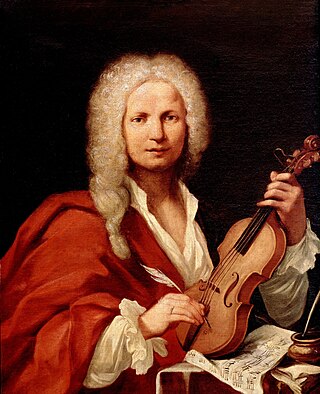
Antonio Lucio Vivaldi was an Italian composer, virtuoso violinist and impresario of Baroque music. Along with Johann Sebastian Bach and George Frideric Handel, Vivaldi is regarded as one of the greatest Baroque composers and his influence during his lifetime was widespread across Europe, giving origin to many imitators and admirers. He pioneered many developments in orchestration, violin technique and programmatic music. He consolidated the emerging concerto form into a widely accepted and followed idiom.

Arcangelo Corelli was an Italian composer and violinist of the Baroque era. His music was key in the development of the modern genres of sonata and concerto, in establishing the preeminence of the violin, and as the first coalescing of modern tonality and functional harmony.

Raphael Holinshed was an English chronicler, who was most famous for his work on The Chronicles of England, Scotlande, and Irelande, commonly known as Holinshed's Chronicles. It was the "first complete printed history of England composed as a continuous narrative". The Holinshed Chronicles was a major influence on many Renaissances writers, such as Shakespeare, Spenser, Daniel and Marlowe.
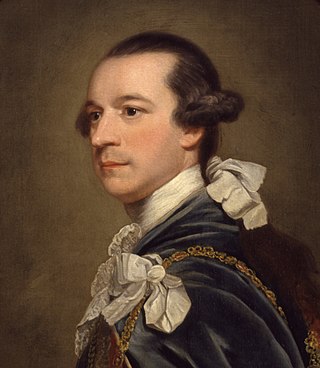
Charles Watson-Wentworth, 2nd Marquess of Rockingham, was a British Whig statesman and magnate, most notable for his two terms as Prime Minister of Great Britain. He became the patron of many Whigs, known as the Rockingham Whigs, and served as a leading Whig grandee. He served in only two high offices during his lifetime but was nonetheless very influential during his one and a half years of service.

Field Marshal John Ligonier, 1st Earl Ligonier,, was a French Huguenot exile, born Jean Louis de Ligonier in Castres, Southern France. He had a long and distinguished career in the British army and was appointed Commander-in-chief in 1757.
The year 1703 in music involved some significant events.

L'estro armonico, Op. 3, is a set of 12 concertos for stringed instruments by Italian composer Antonio Vivaldi, first published in Amsterdam in 1711. Vivaldi's Twelve Trio Sonatas, Op. 1, and Twelve Violin Sonatas, Op. 2, only contained sonatas, thus L'estro armonico was his first collection of concertos appearing in print. It was also the first time he chose a foreign publisher, Estienne Roger, instead of an Italian. Each concerto was printed in eight parts: four violins, two violas, cello and continuo. The continuo part was printed as a figured bass for violone and harpsichord.

Lieutenant-General WillemAnne van Keppel, 2nd Earl of Albemarle was a British soldier, diplomat and courtier.
Matthew Dubourg was an English violinist, conductor, and composer who spent most of his life in Ireland. Among other achievements, Dubourg led the orchestra at the premiere of Georg Friedrich Handel's great oratorio Messiah.
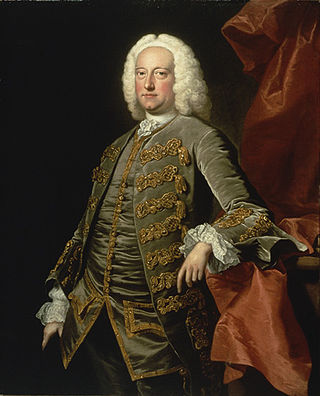
Charles Jennens was an English landowner and patron of the arts. As a friend of Handel, he helped author the libretti of several of his oratorios, most notably Messiah.

Tivadar Nachéz was a Hungarian violinist and composer for violin who had an international career, but made his home in London during his career.
Events from the year 1714 in Ireland.
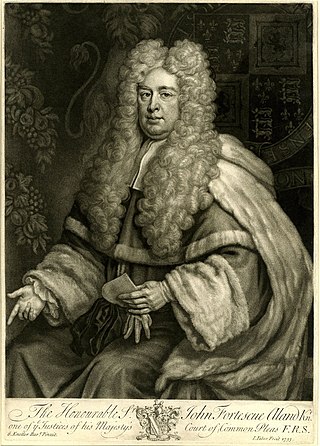
John Fortescue Aland, 1st Baron Fortescue of Credan, of Stapleford Abbotts, Essex, was an English lawyer, judge and politician who sat in the House of Commons for two years from 1715 to 1717. He wrote on English legal and constitutional history, and was said to have influenced Thomas Jefferson. A member of both the Middle Temple and Inner Temple, he became a King's Counsel in 1714 and was then appointed Solicitor General, first to the Prince of Wales and then to his father George I in 1715. After a short stint as a Member of Parliament, Fortescue Aland was knighted and elevated to the Bench as a Baron of the Exchequer in 1717. He was subsequently a justice of the Court of King's Bench (1718–1727) and of the Court of Common Pleas (1728–1746), save for a brief hiatus between 1727 and 1728 which has been attributed to George II's displeasure with one of his legal opinions.
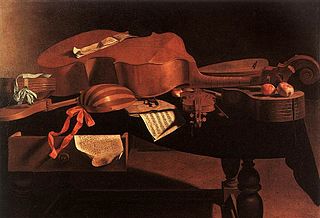
Baroque music refers to the period or dominant style of Western classical music composed from about 1600 to 1750. The Baroque style followed the Renaissance period, and was followed in turn by the Classical period after a short transition. The Baroque period is divided into three major phases: early, middle, and late. Overlapping in time, they are conventionally dated from 1580 to 1650, from 1630 to 1700, and from 1680 to 1750. Baroque music forms a major portion of the "classical music" canon, and is widely studied, performed, and listened to. The term "baroque" comes from the Portuguese word barroco, meaning "misshapen pearl". The works of George Frideric Handel and Johann Sebastian Bach are considered the pinnacle of the Baroque period. Other key composers of the Baroque era include Claudio Monteverdi, Domenico Scarlatti, Alessandro Scarlatti, Alessandro Stradella, Antonio Vivaldi, Tomaso Albinoni, Johann Pachelbel, Henry Purcell, Georg Philipp Telemann, Jean-Baptiste Lully, Jean-Philippe Rameau, Marc-Antoine Charpentier, Arcangelo Corelli, François Couperin, Johann Hermann Schein, Heinrich Schütz, Samuel Scheidt, Dieterich Buxtehude, and others.

Estienne Roger was a francophone printer, bookseller and publisher of sheet music working in the Netherlands.
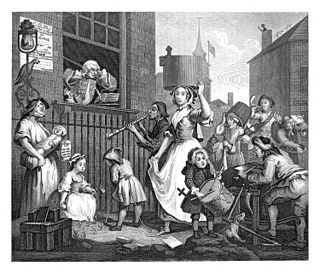
Pietro Castrucci was an Italian violinist and composer.
George Dubourg, was an English writer on the violin and a songwriter.

Victoria Dubourg or Victoria Fantin-Latour was a French still life painter.
The concerto transcriptions of Johann Sebastian Bach date from his second period at the court in Weimar (1708–1717). Bach transcribed for organ and harpsichord a number of Italian and Italianate concertos, mainly by Antonio Vivaldi, but with others by Alessandro Marcello, Benedetto Marcello, Georg Philipp Telemann and the musically talented Prince Johann Ernst of Saxe-Weimar. It is thought that most of the transcriptions were probably made in 1713–1714. Their publication by C.F. Peters in the 1850s and by Breitkopf & Härtel in the 1890s played a decisive role in the Vivaldi revival of the twentieth century.

Hickford's Long Room was a public concert room in London, which ran from April 1713 until 1787; it became known as Rice's Rooms from 1788. Harrison's date of 1779 is not correct. It was paid for on a subscription basis to those who could afford to patronize the arts, such as the nobility. The 1922 Groves noted that "most of the great performers, both vocal and instrumental, who visited England, gave their concerts there." The room became a place to see successful musicians play, including Francesco Scarlatti, Francesco Geminiani, Gluck in 1746, Mozart (1765), Francesco Maria Veracini, Pietro Castrucci and Matthew Dubourg. For a time in the 1740s and 50s, it was the only concert room of note in the West End of London.
References
- ↑ Dubourg, George, 1799-1882. (1977). The violin : some account of that leading instrument and its most eminent professors, from its earliest date to the present time : with hints to amateurs, anecdotes, etc. Boston: Longwood Press. ISBN 0-89341-090-X. OCLC 2966220.
{{cite book}}: CS1 maint: multiple names: authors list (link)
- John Clegg, Oxford Dictionary of National Biography, Oxford University Press, 2004. Subscription or membership of a UK public library required).
- Highfill, Philip H.; Burnim, Kalman A.; Langhans, Edward A. (1975), A Biographical Dictionary of Actors 1660-1800, Volume 3, Cabanel to Cory, SIU Press, pp. 104–105, 318, ISBN 0809306921